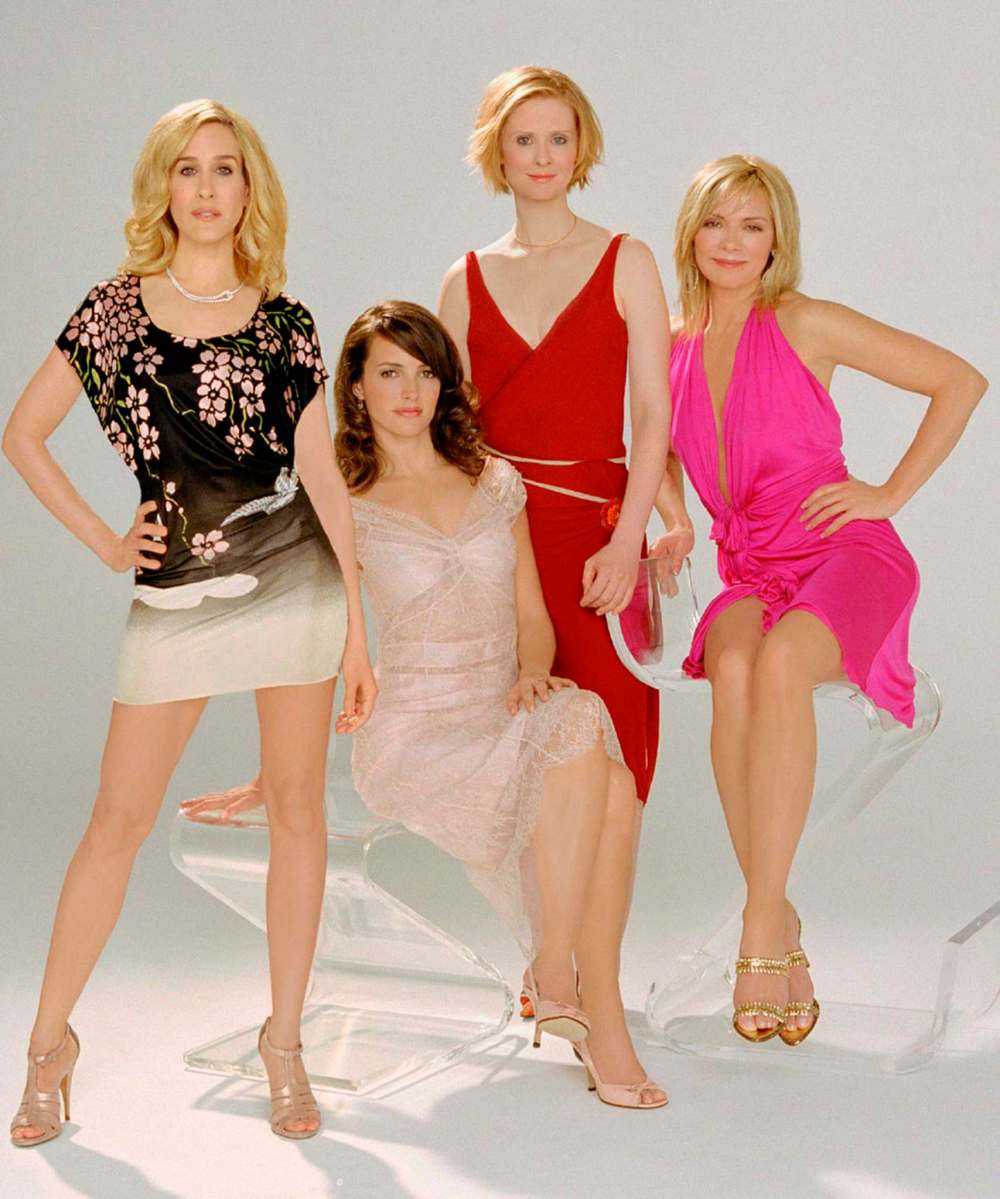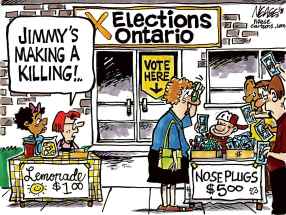After 20 years, Sex and the City deserves credit for lasting TV impact
Read this article for free:
or
Already have an account? Log in here »
To continue reading, please subscribe:
Monthly Digital Subscription
$0 for the first 4 weeks*
- Enjoy unlimited reading on winnipegfreepress.com
- Read the E-Edition, our digital replica newspaper
- Access News Break, our award-winning app
- Play interactive puzzles
*No charge for 4 weeks then price increases to the regular rate of $19.00 plus GST every four weeks. Offer available to new and qualified returning subscribers only. Cancel any time.
Monthly Digital Subscription
$4.75/week*
- Enjoy unlimited reading on winnipegfreepress.com
- Read the E-Edition, our digital replica newspaper
- Access News Break, our award-winning app
- Play interactive puzzles
*Billed as $19 plus GST every four weeks. Cancel any time.
To continue reading, please subscribe:
Add Free Press access to your Brandon Sun subscription for only an additional
$1 for the first 4 weeks*
*Your next subscription payment will increase by $1.00 and you will be charged $16.99 plus GST for four weeks. After four weeks, your payment will increase to $23.99 plus GST every four weeks.
Read unlimited articles for free today:
or
Already have an account? Log in here »
Hey there, time traveller!
This article was published 05/06/2018 (2749 days ago), so information in it may no longer be current.
On June 6, 1998, a show debuted on HBO that altered the television landscape, and laid the blueprint for Prestige TV.
I’m not talking about The Sopranos, though that would be a fair assumption. I’m talking about Sex and the City.
Yes, it’s been 20 years since we first saw Carrie Bradshaw (Sarah Jessica Parker) in her whimsical little tutu get splashed by a New York City bus in those now-iconic opening credits. Two decades since we met her friends Samantha Jones (Kim Cattrall), Charlotte York (Kristin Davis) and Miranda Hobbes (Cynthia Nixon).
It was a revolutionary show, one that showed the lives of four single women in a way the world had never seen before.

I was 13 when Sex and the City debuted, but I watched the late-night unedited reruns on Bravo throughout my teens, usually while I was out babysitting, after the kids were put to bed. Armed with the baby monitor and a row of Oreos, I’d settle in to watch from the privacy afforded by someone else’s living room.
I couldn’t possibly watch such an in-your-face show at home — you know, where my parents lived. I mean, the word “sex” was right there in the title. But beyond the sex scenes, which I watched on mute because I am respectful, I found the show endlessly compelling: it offered a glimpse into a mature, glamorous world so far removed from my own.
In the intervening years, I’ve binge-watched the entire series several times now, and each watch reveals something new. Some of it does not hold up in 2018; for a sex columnist, Carrie Bradshaw sure has a time wrapping her mind around the concept of bisexuality, and the cast is as white as the driven snow.
Rewatching Sex and the City in my 30s, the same age as the women on the show, was also a bit of a trip. The characters I identified with — and rooted for — changed (Team Miranda all the way). The men of the show also look different through the lens of adulthood. Carrie’s nice-guy boyfriend Aiden (John Corbett) is actually a manipulative dirtbag in aw-shucks clothing. Mr. Big, the 40-something financier played by Chris Noth and his eyebrows, is the wild horse that can’t be tamed, not Carrie.
And how could I have missed that the best one all along was Harry, the divorce lawyer played by Evan Handler who Charlotte finally ends up with?

Sex and the City is often held up as a paean to singledom, although it should be noted that all the women pair off in the end. But it showed that being a single woman isn’t a tragedy, even if it doesn’t always feel fabulous.
In 2013, on the occasion of SATC’s 15th anniversary, the New Yorker’s Emily Nussbaum examined how Sex and the City’s reputation has faded over the years, going from groundbreaking to guilty pleasure at a fairly brisk clip.
Unlike The Sopranos, which debuted on HBO a year after SATC and whose place is firmly cemented in the upper echelon of quality, influential television, Sex and the City is not shown the same kind of respect, even though it was, as Nussbaum writes, “the peer of The Sopranos, albeit in a different tone and in a different milieu, deconstructing a different genre.”
That genre was the romantic comedy and, although it fell into some of the tropes it sought to subvert later on, it was a smarter show than people like to give it credit for.
Toasting Sex and the City
Beyond the handbags, designer shoes and man troubles, there was one thing viewers of Sex and the City could count on — cocktail hour.

Beyond the handbags, designer shoes and man troubles, there was one thing viewers of Sex and the City could count on — cocktail hour.
Here are some suggestions for raising a glass to toast everyone’s favourite frisky foursome.
Cosmopolitan
https://youtu.be/71HVPfQtJ1s:wfpyoutube
The Sex and the City staple. It’s typically a blend of lemon vodka, triple sec, cranberry juice and lime juice, poured into a shaker filled with ice, shaken before being strained into a martini-style cocktail glass and garnished with lime.
https://youtu.be/yR9xKjRQqrI:wfpyoutube
“Why did we ever stop drinking these?” Miranda asks in the Sex and the City film. “Because everyone else started,” Carrie replies. It’s these four women who sent the drink’s popularity skyrocketing.
Dirty Martini
wfpyoutube:https://youtu.be/fnt2loeKPJE
If you must drink a martini, a dirty martini is as good a choice as any. What makes the dirty martini dirty? In addition to gin and vermouth, olive juice/brine is added, ramping up the salty olive flavours. Add slowly unless you want your dirty martini to be on the filthy side.
Long Island iced tea
wfpyoutube:https://youtu.be/F-5cOaIXct8
In the first episode of the third season, the girls head to Staten Island for a firefighter calendar competition and tuck into a few of these cocktails, a citrus-garnished drink made with tequila, vodka, light rum, gin and triple sec with just enough cola to make it look iced tea-ish.
French 75

Carrie’s Parisian adventure is reason enough to raise a French 75, a combination of gin, sparkling wine, lemon juice and simple syrup. They’re dangerously delicious.
Manhattan

While more typically consumed by Mad Men characters at an alarming rate, it seems only fitting to toast Carrie, Miranda, Samantha and Charlotte with this cocktail made from whisky, sweet vermouth and bitters.
Absolut hunk martini

This cocktail stems from an episode where Samantha gets her boyfriend a modeling job where he poses naked on an Absolut billboard. Combine two parts vanilla vodka with one-half part each of lime juice and simple syrup, with a splash of pineapple juice and a lime twist as garnish. And… bottoms up.
— Ben MacPhee-Sigurdson
“High-feminine instead of fetishistically masculine, glittery rather than gritty, and daring in its conception of character, Sex and the City was a brilliant and, in certain ways, radical show,” Nussbaum writes. “It also originated the unacknowledged first female antihero on television: ladies and gentlemen, Carrie Bradshaw.”
It’s easy to forget, in the hot-pink haze of Manolos, cosmos, designer clothes and the unmitigated trainwrecks that were the movies, that this show broke ground in other ways. Sex and the City was radical because it featured four women talking frankly and honestly about sex, forever changing brunch talk.
But Carrie “couldn’t help but wonder” about many other things that regular women also wondered about — money, power, singledom, friendship, romance. Her column, “Sex and the City,” was never just about sex, and neither was the show.

And indeed, Carrie was an anti-hero in that, even in her most unlikable moments, you still cared about what happened to her. Her life was messy. She made bad decisions. She hurt people she cared about. But then, they all did. Over the past 20 years, Carrie, Samantha, Charlotte and Miranda became flattened into archetypal answers on a personality quiz — “Are you a Carrie or a Miranda?” But when you rewatch the series, you quickly see that they were never that one-dimensional, and all four of them grew and evolved over the course of the series in significant, meaningful ways.
To that end, where the show might be most pioneering is in its realistic depiction of female friendship. The women cared about and challenged each other. They could be thoughtless, self-involved and deeply judgmental about each other’s life choices — but they were also supportive and compassionate. In other words, they were human, and when they fought, it felt real. Their friendships were not contingent on perfect behaviour.
Forget Carrie and Big: that’s the real love story at the heart of Sex and the City, the one between these friends.
At the end of the series, Carrie makes a disastrous and ill-advised move to Paris with the Russian (Mikhail Baryshnikov) and is rescued by Big. But on my latest rewatch, I found myself wishing it was Miranda who showed up in that Paris hotel lobby to take Carrie home.
jen.zoratti@freepress.mb.ca
Twitter: @JenZoratti

Jen Zoratti is a Winnipeg Free Press columnist and author of the newsletter, NEXT, a weekly look towards a post-pandemic future.
Our newsroom depends on a growing audience of readers to power our journalism. If you are not a paid reader, please consider becoming a subscriber.
Our newsroom depends on its audience of readers to power our journalism. Thank you for your support.









